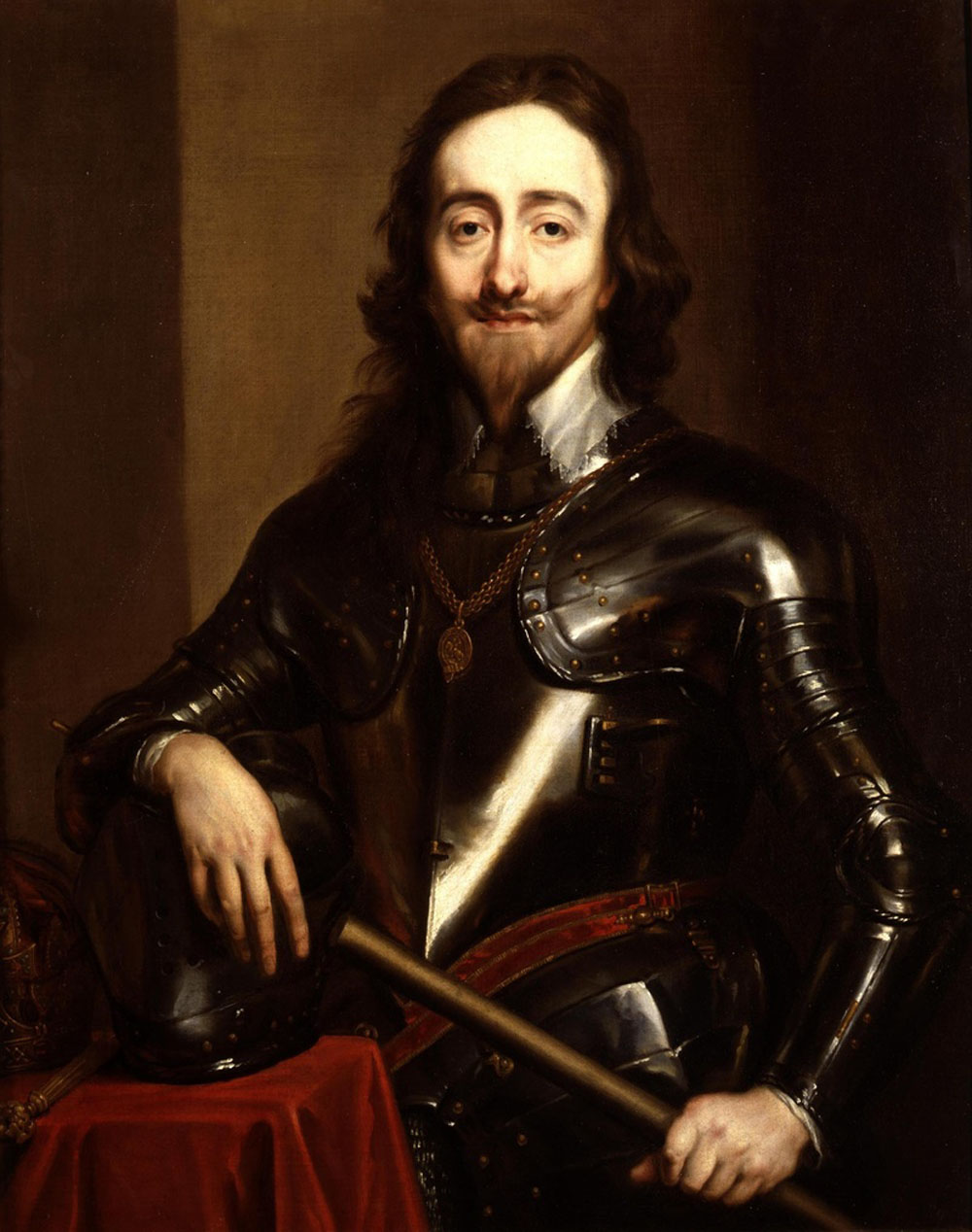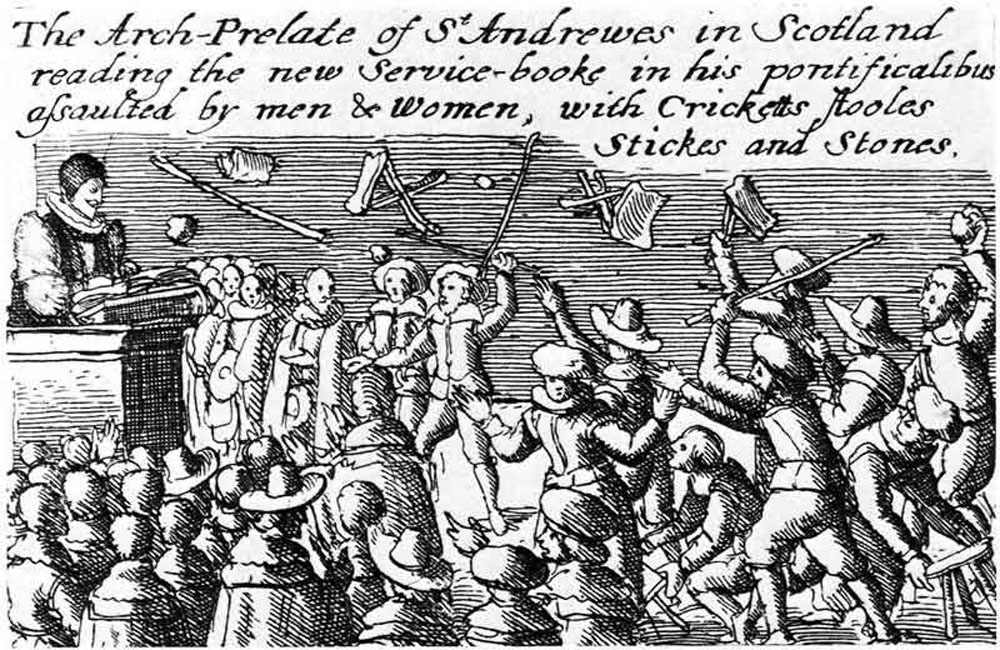Charles I and the National Covenant
| < Deep seated flaws | Δ Index | Abolition of the Monarchy > |
In 1625, James died and his son Charles I took the throne. Matters did not improve.
 King Charles I
King Charles I
In 1637 a riot broke out in St Giles’, Edinburgh’s main church in protest against a new prayer book which Charles I had tried to force on his northern kingdom. The Stoneyfield Sabbath Day is a contemporary account of the riot.
 The 1637 riot in St Giles
The 1637 riot in St Giles
By 1638, the Scots were in full-scale revolt against the king, with more than half of the population having subscribed a solemn oath – the so-called National Covenant – binding them together as a nation under God. The Scottish Revolution had begun.
In 1639 Charles I staged an abortive invasion of Scotland. Its only success was the brief capture of Inchkeith in the River Forth.
In 1640 an army of Scottish Covenanters retaliated by invading the north of England, taking the city of Newcastle, and forcing the King into wholesale concessions. By 1642 the Scottish revolt had become a civil war which engulfed all three of Charles’s kingdoms – England, Ireland and Scotland. The Wars of the Three Kingdoms had begun and would lead to the abolition of the monarchy.
| < Deep seated flaws | Δ Index | Abolition of the Monarchy > |